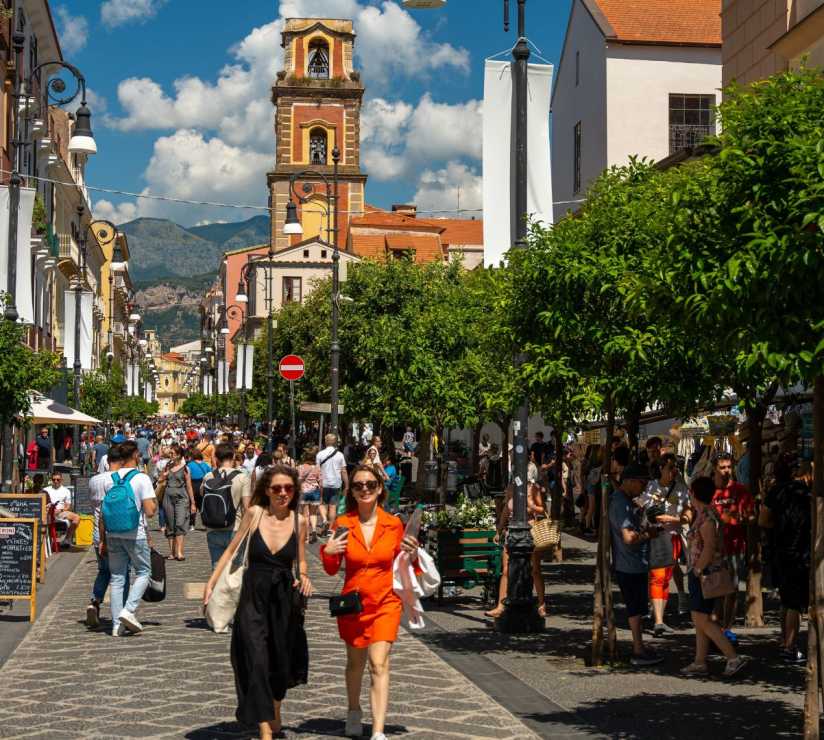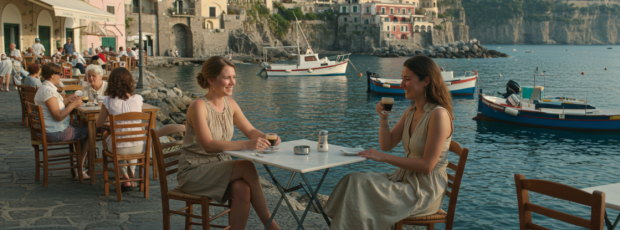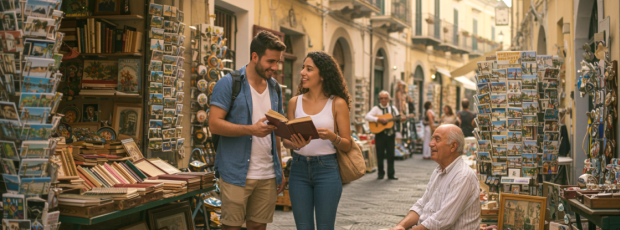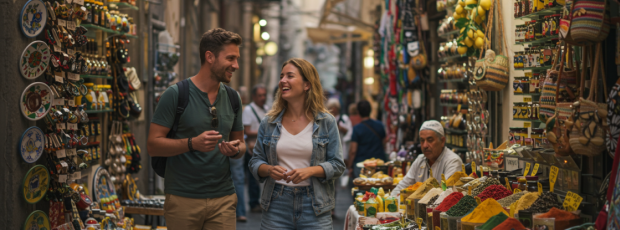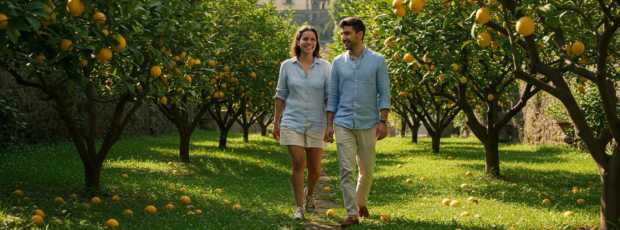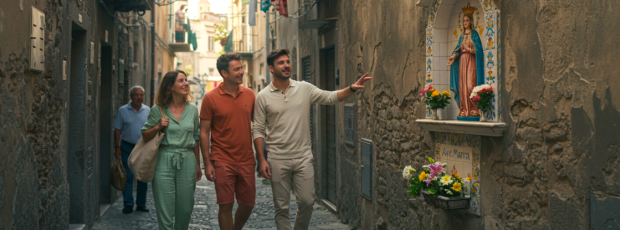Table Of Contents
- What Makes East Singapore Special?
- Joo Chiat: The Heart of Peranakan Singapore
- Discovering the Katong Antique House
- Hidden Gems and Cultural Workshops in Joo Chiat
- Traditional Food Culture That Defines Joo Chiat
- East Coast Park: Singapore's Natural Playground
- Water Sports Adventures Along the East Coast
- Cycling Culture and Scenic Routes
- East Coast Park's Legendary Food Scene
- Changi Village: Where Tradition Meets Tranquility
- Exploring Pulau Ubin's Natural Heritage
- Changi Village's Authentic Food Heritage
- Cultural Attractions That Tell Singapore's Story
- Private Museums and Heritage Collections
- Heritage Walks and Cultural Discovery Tours
- Nature Experiences Beyond the Beaches
- Hidden Parks and Green Spaces
- Connecting with Singapore's Natural Heritage
- Shopping and Local Markets
- Wet Markets and Local Community Shopping
- Craft Shops and Cultural Preservation
- Food Adventures in East Singapore
- Traditional Dishes and Family Recipes
- Neighborhood Food Culture and Local Flavors
- Modern Attractions with Traditional Roots
- Balancing Development with Heritage Preservation
- Contemporary Art and Cultural Expression
- Transportation and Getting Around East Singapore
- Planning Your Visit to East Singapore
- Essential Tips for East Singapore Exploration
- Why East Singapore Deserves More Time
When friends come to Singapore, they inevitably ask me: "Where should we go that isn't Marina Bay Sands or Orchard Road?" I always tell them the same thing – go east. While tourists flock to the city skyline and shopping districts, I've spent the last decade exploring every corner of east Singapore, and I can tell you with certainty that this is where the real Singapore lives and breathes.
The eastern part of Singapore holds a treasure trove of experiences that both locals and visitors often overlook. From the rich heritage of Joo Chiat's Peranakan culture to the endless stretches of East Coast Park, this region offers authentic Singapore experiences that you simply can't find elsewhere in the city.
What Makes East Singapore Special?
East Singapore isn't just another district – it's a living museum of Singapore's multicultural heritage. Here, traditional Chinese values blend seamlessly with Peranakan culture, creating a unique tapestry that reflects our Lion City's complex history. Unlike the polished attractions downtown, the eastern part of this city maintains its authentic character through generations-old shophouses, family-run hawker stalls, and communities that have called this area home for decades.
The beauty of exploring East Singapore lies in its diversity of experiences. One moment you're admiring intricately beaded slippers at a private museum, the next you're cycling through green space that stretches along our coastline. This region perfectly captures what makes Singapore special – the ability to seamlessly blend tradition with modernity, nature with urban life.
Joo Chiat: The Heart of Peranakan Singapore
I always start my East Singapore tours in Joo Chiat, and for good reason. This neighborhood is home to one of Singapore's most vibrant Peranakan communities, where the culture isn't just preserved in museums but lived daily by families who've maintained these traditions for generations.
Walking down Koon Seng Road feels like stepping into a time capsule. The colourful shophouses here aren't just Instagram backdrops – they're homes where families still practice traditional recipes and customs. I've watched aunties hang laundry from the same ornate balconies their grandmothers used, creating a continuity that's increasingly rare in modern Singapore.
Looking for a private city experience in Sorrento?
Explore the city with a local who plans a private day just for you; no groups, no scripts.
Discovering the Katong Antique House
The Katong Antique House stands as a must visit destination for anyone wanting to understand Peranakan culture beyond the surface level. Unlike larger museums, this private museum offers an intimate look at how Peranakan families actually lived. The owner often shares stories about each piece, from wedding jewelry to everyday household items that tell the story of this unique Eurasian heritage.
Hidden Gems and Cultural Workshops in Joo Chiat
What I love most about Joo Chiat is how it rewards curiosity. Turn down any side street and you'll find something unexpected – perhaps a workshop where craftsmen still create traditional Peranakan tiles, or a small shrine tucked between shophouses where both locals and visitors leave offerings.
The area around the Eurasian Heritage Gallery offers another fascinating glimpse into Singapore's multicultural heritage. The Eurasian community has deep roots in this eastern part of Singapore, and their stories add another layer to the rich tapestry of cultures that call this area home.
Traditional Food Culture That Defines Joo Chiat
No exploration of Joo Chiat is complete without diving into its food scene. Kim Choo Kueh Chang has been serving traditional nonya kueh from the same shophouse for decades. I've watched three generations of the same family perfect their recipes, maintaining flavors that connect us to Singapore's culinary heritage.
The hokkien mee here tastes different from what you'll find in other parts of Singapore – it's prepared with a technique that's been passed down through families who settled in this area generations ago. This isn't just food; it's edible history that tells the story of how different communities adapted their traditions to life in Singapore.
What if your day in Sorrento was planned by someone who knows it — and you?
City Unscripted matches you with a local host who creates a private experience based on your interests, not a set route.
East Coast Park: Singapore's Natural Playground
When people ask me about things to do in East Singapore that showcase our natural side, East Coast Park is always my first recommendation. This isn't just any park – it's a 15-kilometer stretch of coastline that serves as Singapore's largest recreational area and one of our most beloved green spaces.
I've spent countless mornings here watching the sunrise paint the South China Sea in shades of gold and pink. The park transforms throughout the day, welcoming joggers at dawn, families with children by mid-morning, and cyclists seeking a leisurely ride along the coastal path by afternoon.
Water Sports Adventures Along the East Coast
East Coast Park offers some of the best water sports opportunities in Singapore. The consistent sea breeze makes it ideal for windsurfing and sailing, while the protected waters are perfect for kayaking and stand-up paddleboarding. I've introduced countless visitors to these activities, and watching their faces light up as they navigate Singapore's waters never gets old.
For thrill seekers, the park's wakeboarding and water skiing facilities provide adrenaline-pumping experiences against the scenic backdrop of Singapore's eastern coastline. The rental facilities here cater to all skill levels, making water sports accessible whether you're a complete beginner or an experienced enthusiast.
Cycling Culture and Scenic Routes
You can't truly experience East Coast Park without spending time on two wheels. The dedicated cycling paths here stretch from the city center all the way to Changi, offering one of Singapore's most scenic cycling routes. I often rent bicycles near the food centres and spend entire afternoons exploring different sections of the park.
The elevated walkways and bridges throughout the park provide perfect vantage points for photographing Singapore's unique blend of urban development and natural preservation. From certain points, you can see both the city skyline and undeveloped coastal areas, capturing the essence of what makes Singapore special.
Tip
We match you with the right host, not just any guide.Want to experience the real Sorrento with someone who lives there?
A fully private experience, planned and led by a local host who tailors the day to you
East Coast Park's Legendary Food Scene
The hawker centres scattered throughout East Coast Park represent some of Singapore's most authentic dining experiences. Unlike tourist-focused restaurants, these stalls serve both locals and visitors the same quality food that's kept families returning for decades.
The satay stalls here are legendary among Singaporeans. I've brought friends from around the world to taste these perfectly grilled skewers, and the experience of eating fresh satay while watching the sun set over the water has converted more than one person into a Singapore food enthusiast.
Changi Village: Where Tradition Meets Tranquility
Changi Village occupies a special place in my heart as one of East Singapore's most authentic neighborhoods. Far from the tourist crowds, this area maintains a village-like atmosphere that's increasingly rare in modern Singapore. The community here feels distinctly different from other parts of the city – more relaxed, more connected to the natural environment that surrounds it.
The Changi Point Ferry Terminal serves as the gateway to some of Singapore's most pristine natural areas. From here, you can catch boats to Pulau Ubin, where Singapore's wild side still thrives in ways that remind you of what this entire region looked like before development transformed most of our landscape.
Exploring Pulau Ubin's Natural Heritage
Taking the short ferry ride from Changi Point Ferry Terminal to Pulau Ubin feels like traveling back in time. This small island preserves the kampong lifestyle that once defined rural Singapore, complete with traditional wooden houses and unpaved roads that wind through preserved forest.
The Chek Jawa Wetlands on Pulau Ubin showcase Singapore's incredible biodiversity. I've guided nature enthusiasts through these mangrove forests and watched them discover species they never expected to find so close to a major urban center. The elevated boardwalks here provide access to ecosystems that represent Singapore's natural heritage before large-scale development began.
Ready to plan your perfect day in Sorrento?
Start your experienceChangi Village's Authentic Food Heritage
The hawker stalls in Changi Village serve some of Singapore's most traditional dishes in settings that haven't changed much in decades. The nasi lemak here tastes exactly like what my grandmother used to make, prepared by cooks who learned their recipes from the same generation of immigrant families who established Singapore's food culture.
What makes eating in Changi Village special is the community atmosphere. Meals here aren't rushed experiences – they're opportunities to connect with both locals and other visitors over food that represents the authentic flavors of Singapore's multicultural heritage.
Cultural Attractions That Tell Singapore's Story
East Singapore houses several cultural attractions that provide deeper understanding of our nation's complex heritage. These aren't the polished, air-conditioned museums you'll find in the city center – they're intimate spaces where Singapore's history feels personal and immediate.
Haw Par Villa stands as one of Singapore's most unique cultural attractions. Created by Aw Boon Haw, this park combines traditional Chinese mythology with distinctly Singaporean artistic interpretation. Walking through its colorful dioramas feels like exploring Singapore's cultural psyche – sometimes whimsical, sometimes profound, always uniquely ours.
Private Museums and Heritage Collections
The private museums scattered throughout East Singapore offer more intimate cultural experiences than their larger counterparts downtown. These smaller institutions often focus on specific aspects of Singapore's heritage, from Peranakan antiques to the evolution of our housing development policies.
What I appreciate about these museums is their connection to the communities they serve. Rather than presenting sanitized versions of history, they tell stories that connect directly to the families and neighborhoods that still call east Singapore home.
Heritage Walks and Cultural Discovery Tours
The heritage walks available throughout East Singapore provide structured ways to explore the area's cultural significance. I often join these walks even though I know the area well because local guides always share stories I haven't heard before – family histories, architectural details, or cultural practices that add new layers to familiar places.
These walks connect different cultural sites throughout the eastern part of Singapore, creating narratives that help visitors understand how various communities have shaped this region over generations. The best guides treat these walks less like tours and more like conversations with friends who happen to know fascinating stories about every street corner.
Nature Experiences Beyond the Beaches
While East Coast Park captures most attention for outdoor activities in east Singapore, the region offers numerous other nature experiences that showcase Singapore's commitment to preserving green space within urban development.
The Southern Ridges extend into parts of East Singapore, providing walking trails that connect different parks and nature areas through elevated walkways. Henderson Waves, the highest pedestrian bridge in Singapore, offers spectacular views across the southern part of our island while demonstrating how modern engineering can enhance rather than diminish natural experiences.
Hidden Parks and Green Spaces
Kent Ridge Park provides another excellent example of how east Singapore balances urban development with natural preservation. The park's walking trails wind through secondary forest that supports diverse wildlife, while interpretive signs help visitors understand the ecological significance of what they're experiencing.
These smaller parks scattered throughout east Singapore serve important roles in maintaining the quality of life that makes this city special. They provide green space for recreation, habitat for wildlife, and breathing room that prevents the eastern part of Singapore from feeling as dense as some other urban areas.
Connecting with Singapore's Natural Heritage
What makes nature experiences in East Singapore special is how they connect to Singapore's broader story of environmental stewardship. The National Orchid Garden, while technically in the central part of Singapore, represents the same philosophy that guides green space development throughout the eastern part of our city.
These nature areas aren't just recreational spaces – they're living laboratories where Singapore continues developing approaches to urban sustainability that cities around the world study and adapt. Walking through these green spaces, you're experiencing solutions to environmental challenges that affect urban areas throughout Southeast Asia.
Shopping and Local Markets
Shopping in East Singapore offers completely different experiences from what you'll find on Orchard Road or in Marina Bay. Here, shopping means discovering family-run businesses that have served their communities for generations, exploring markets where fresh produce comes from Singapore and Malaysian suppliers, and finding handcrafted items that connect to our cultural heritage.
The traditional shops scattered throughout Joo Chiat and other eastern neighborhoods sell everything from Peranakan antiques to ingredients needed for traditional recipes that many modern Singaporeans no longer prepare at home. These aren't tourist shops – they're businesses that serve real community needs while preserving cultural knowledge that might otherwise disappear.
Wet Markets and Local Community Shopping
The wet markets in East Singapore provide authentic glimpses into how both locals and long-term residents actually shop for food. These markets operate early in the morning when the freshest ingredients arrive, creating bustling environments where you can observe Singapore's food culture in its most essential form.
Shopping at these markets requires some cultural knowledge – understanding which vendors offer the best quality, knowing how to select fresh ingredients, and being comfortable with the sometimes chaotic but always friendly atmosphere that characterizes these community gathering places.
Craft Shops and Cultural Preservation
The craft shops throughout east Singapore preserve traditional skills that connect to our multicultural heritage. Whether it's shops that still create traditional Chinese calligraphy or workshops where craftsmen repair and restore Peranakan antiques, these businesses maintain cultural knowledge that enriches Singapore's artistic heritage.
Supporting these shops means more than just purchasing unique items – it's participating in cultural preservation that helps maintain the diversity of skills and knowledge that makes Singapore's heritage so rich and complex.
Food Adventures in East Singapore
Food culture in East Singapore deserves its own extensive exploration because it represents some of Singapore's most authentic culinary experiences. Unlike restaurants designed for tourists, the food establishments here serve the dishes that Singapore families actually eat, prepared using techniques and recipes that have been refined over generations.
The hawker stalls throughout the eastern part of Singapore maintain standards that would impress food critics while keeping prices accessible to the communities they serve. I've eaten at these stalls hundreds of times, and the consistency of quality demonstrates the pride these food artisans take in their craft.
Traditional Dishes and Family Recipes
Many of the food stalls in East Singapore are family operations where recipes pass between generations along with the techniques needed to execute them properly. The laksa served at certain stalls tastes distinctly different from versions you'll find elsewhere because these families developed their own interpretations based on ingredients available in their specific neighborhoods.
Understanding the stories behind these dishes adds depth to every meal. The uncle who's been making char kway teow for thirty years learned his technique from the previous stall owner, who adapted a recipe his family brought from Malaysia. This continuity creates food experiences that connect to Singapore's immigration history in ways that formal cultural presentations cannot match.
Neighborhood Food Culture and Local Flavors
Each neighborhood in East Singapore has developed its own food personality based on the communities that settled there. The Malay food in Changi Village reflects the maritime culture of families who worked in fishing and shipping, while the Chinese food in other areas shows influences from specific provinces based on immigration patterns.
Exploring these neighborhood food scenes requires time and curiosity. The best discoveries happen when you notice which stalls attract the most locals during meal times, or when you're willing to try dishes that don't appear on typical tourist food lists but represent what people in these communities actually prefer to eat.
Modern Attractions with Traditional Roots
East Singapore successfully balances preservation of heritage with development of modern attractions that serve both locals and visitors. These newer facilities enhance the area's appeal without overwhelming the traditional character that makes east Singapore special.
Jewel Changi demonstrates how modern attractions can complement rather than compete with traditional experiences. While the Cloud Forest and other features attract international attention, the facility also provides improved access to the eastern part of Singapore and creates economic opportunities for local businesses.
Balancing Development with Heritage Preservation
The challenge of developing east Singapore lies in maintaining the authentic character that makes it special while providing modern amenities that improve quality of life for residents. The most successful developments integrate with existing communities rather than replacing them.
Modern facilities like improved cycling infrastructure and updated hawker centres enhance traditional activities rather than supplanting them. You can still experience authentic food culture and heritage tourism, but with better facilities and improved accessibility that make these experiences available to more people.
Contemporary Art and Cultural Expression
The art galleries and cultural spaces throughout East Singapore showcase how contemporary artists interpret traditional themes and cultural heritage. These venues provide platforms for both established and emerging artists to explore Singapore's multicultural identity through modern artistic expression.
Live performances in these spaces often blend traditional music and dance with contemporary interpretations, creating cultural experiences that connect to heritage while speaking to modern audiences. These performances demonstrate how culture evolves while maintaining connections to its roots.
Transportation and Getting Around East Singapore
Navigating East Singapore efficiently requires understanding both public transportation options and the benefits of different travel methods for various activities. The MRT system provides excellent access to major destinations, while buses serve neighborhoods and attractions that aren't directly connected to train lines.
The MRT's Eastern Line connects most major attractions in East Singapore to the rest of the city's transportation network. Stations like Paya Lebar, Eunos, and Bedok provide access to different neighborhoods and cultural sites, while connecting services reach areas like Changi Village and other coastal destinations.
Understanding bus routes becomes important for reaching some of the more specific attractions and food establishments that make East Singapore special. While these journeys take longer than MRT travel, they provide opportunities to observe daily life in Singapore neighborhoods that many visitors never experience.
Cycling represents the ideal way to explore many areas of East Singapore, particularly East Coast Park and the connecting paths between different neighborhoods. The flat terrain and dedicated cycling infrastructure make bicycle exploration comfortable for people of various fitness levels.
The pedestrian and cycling infrastructure throughout East Singapore reflects Singapore's commitment to sustainable transportation and quality of life improvements. Well-maintained sidewalks connect different attractions and neighborhoods, while dedicated cycling paths provide safe routes for both recreational and transportation cycling.
Park connectors link different green spaces throughout East Singapore, creating continuous routes for walking and cycling that demonstrate how urban planning can enhance rather than diminish natural experiences. These connections make it possible to spend entire days exploring the eastern part of Singapore using only non-motorized transportation.
Planning Your Visit to East Singapore
The best approach to exploring East Singapore involves balancing planned visits to specific attractions with unstructured time for discovery. This region rewards curiosity and spontaneity in ways that more tourist-focused areas cannot match.
I recommend dedicating at least two full days to properly experience East Singapore, with one day focused on cultural attractions and heritage experiences, and another devoted to outdoor activities and food exploration. This timing allows for both structured sightseeing and the kind of wandering that leads to unexpected discoveries.
Singapore's tropical climate affects outdoor activities throughout East Singapore, making timing and preparation important for maximizing enjoyment. The monsoonal weather patterns influence everything from cycling conditions in East Coast Park to the comfort level of walking tours through heritage neighborhoods.
Early morning and late afternoon provide the most comfortable conditions for outdoor exploration, while indoor attractions like museums and cultural centres offer excellent options during the hottest parts of the day or during rain showers that are part of Singapore's weather patterns.
East Singapore connects naturally to Singapore experiences throughout the rest of the city, creating opportunities for comprehensive exploration that showcases different aspects of Singapore's culture and development. The transportation connections make it easy to combine eastern attractions with visits to other parts of Singapore.
For visitors with limited time, East Singapore can be explored as part of broader Singapore itineraries, while those with more time can use this area as a base for deeper exploration of Singapore's multicultural heritage and contemporary development approaches.
Essential Tips for East Singapore Exploration
Successful exploration of East Singapore requires some practical knowledge about local customs, transportation options, and the rhythm of daily life in these neighborhoods. Understanding when different attractions and food establishments operate helps maximize your time and ensures you experience these places when they're at their best.
Many of the hawker stalls and traditional shops in East Singapore operate on schedules that reflect their communities' daily rhythms rather than tourist expectations. The best food often appears early in the morning or during traditional meal times, while some cultural sites close during lunch hours or have limited operating schedules.
Interacting respectfully with the communities that call East Singapore home enhances your experience while supporting the cultural preservation that makes this area special. This means understanding basic etiquette for visiting religious sites, showing appropriate respect when photographing people and their businesses, and being mindful of noise levels in residential areas.
The multicultural nature of East Singapore means that different areas may have different cultural expectations. What's appropriate in one neighborhood might be less suitable in another, making cultural sensitivity and observation important skills for navigating this diverse region successfully.
East Singapore offers excellent value for travelers because many of the best experiences here cost very little money. Hawker food provides world-class culinary experiences at prices that make daily exploration affordable, while many cultural attractions and natural areas are free or charge minimal admission fees.
The greatest expenses in East Singapore typically involve transportation if you're not using public transit, and purchases of crafts or antiques if you're interested in taking home pieces of Singapore's cultural heritage. Even these costs remain reasonable compared to similar experiences in other major cities.
Why East Singapore Deserves More Time
After years of exploring every corner of East Singapore, I'm convinced that this region offers the most authentic Singapore experiences available anywhere in our city. While tourists rush between Marina Bay Sands and the Night Safari, they're missing the neighborhoods where Singapore's multicultural heritage isn't just preserved but actively lived.
The eastern part of Singapore demonstrates how cities can grow and modernize while maintaining the cultural character that makes them unique. The successful integration of heritage preservation with contemporary development here provides models that cities throughout Southeast Asia and the world study and adapt.
What makes East Singapore truly special is how it connects visitors to the authentic rhythms of Singapore life. Here, you can experience Peranakan culture not as a museum exhibit but as a living tradition, taste food that represents real family recipes rather than tourist interpretations, and explore nature areas that serve local communities rather than existing solely for visitors.
The things to do in East Singapore extend far beyond simple sightseeing – they provide opportunities to understand how Singapore's multicultural society actually functions, how our commitment to environmental sustainability shapes daily life, and how traditional cultures adapt and thrive within contemporary urban development.
Whether you're interested in Singapore's rich heritage, seeking authentic food experiences, or wanting to explore our natural areas, East Singapore provides experiences that will change how you understand our Lion City. This isn't just another tourist destination – it's where Singapore's past, present, and future come together in ways that make every visit a discovery.
For travelers looking for things to do in Singapore tomorrow, East Singapore should be at the top of your list. The combination of cultural depth, natural beauty, and authentic local experiences here provides the kind of meaningful travel that stays with you long after you've returned home.
The eastern part of Singapore rewards time and attention in ways that more tourist-focused areas cannot match. Every street corner tells a story, every hawker stall preserves culinary traditions, and every park demonstrates Singapore's commitment to maintaining quality of life within urban development. This is Singapore as we actually live it – vibrant, diverse, and endlessly fascinating for anyone willing to explore beyond the obvious attractions.
Meta Title: What to Do in East Singapore – A Local Host's Guide
Meta Description: Discover things to do in East Singapore with a local host's perspective – from hawker stalls to Peranakan heritage and East Coast Park adventures.
What if your day in Sorrento was planned by someone who knows it — and you?
City Unscripted matches you with a local host who creates a private experience based on your interests, not a set route.
Want to experience the real Sorrento with someone who lives there?
A fully private experience, planned and led by a local host who tailors the day to you
